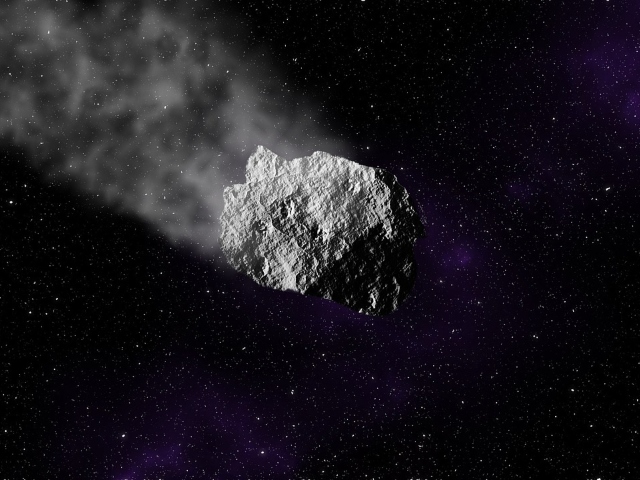
-
Asteroid That Could Destroy A City To Pass Between Earth And Moon Orbit Over The Weekend [Video]
24 Mar 2023 by Heinrich in Space, Tech/Sci, Video, World
[imagesource:pixabay]
An Asteroid big enough to destroy an entire city will harmlessly fly past Earth this weekend, but it will be a close shave.
The celestial object known as 2023 DZ2 will pass Earth at a distance of 515 000 kilometres and although that seems very far, it is still between the orbit of the earth and the moon.
Although there is no reason to grab your go-bag and run for the fallout shelter, the asteroid will give scientists a close-up look at the celestial voyager. Measuring between 40 metres and 90 metres, it is rare for a space rock of this size to come this close to the Earth.
Once passing the moon’s orbit, the asteroid will zoom over the Indian Ocean area at 28 000 km/h.
“There is no chance of this ‘city killer’ striking Earth, but its close approach offers a great opportunity for observations.”
This particular asteroid was predicted to return in 2026, and scientists at the European Space Agency’s planetary defence initially thought the return journey would put it on a collision course with Earth, but luckily the new models have ruled that out. The Virtual Telescope Project will provide a live webcast of the close approach.
Astronomers with the International Asteroid Warning Network see it as good practice for planetary defence if and when a dangerous asteroid is discovered that could hit Earth
We often hear of space rocks flying past Earth, and at several hundreds of thousands of kilometres, they do appear to miss us by a long way. But in astronomical terms, a miss of a few hundred thousand kilometres is the space equivalent of having a bullet brush your hair as it passes. Have a look at the below video to get an idea of just how close this asteroid will come in astronomical terms.
There seems to be a lot more sighting of near-Earth objects lately, but most of these are harmless and pass us by as they head off into the cosmic void. The increase in sightings of these rocks is mostly thanks to renewed efforts by scientists to scan the skies around the Earth for any potential threats.
Agencies like the European Space Agency’s planetary defence systems usually manage to spot these objects before they are too close, but every now and again one slips through and we only find out about it with days to spare.
If you really think about it, we have been incredibly lucky so far.
[source:abc]
Latest News
-
Powerful South African Short Film ‘The Last Ranger’ Scoops Up Awards And International Praise
[imagesource: Cindy Lee Director/Facebook] A compelling South African short film, The L...
-
Caprice Summer Has Started With Brunch (But Better) This Saturday + Other Lush Camps Bay Parties
[imagesource: Instagram/cafecaprice] Is it just me or has Summer been taking its sweet ...
-
Notre-Dame Cathedral In Paris Restored And Ready For Grand Reopening After Devastating Fire
[imagesource:wikimedia] After five years of work and millions in donations, The Notre-D...
-
Self-Destructing Number Plates: The Future Of Gauteng’s Roads Or Spy-Tech Fantasy?
[imagesource:worldlicenseplates.com] What sounds like a James Bond movie is becoming a ...
-
I Changed My Relationship With Food And You Won’t Believe What Happened Next
[imagesource:supplied] As the festive season approaches, it's time to deck the halls, g...
-






























